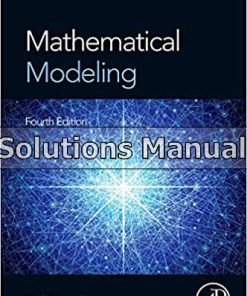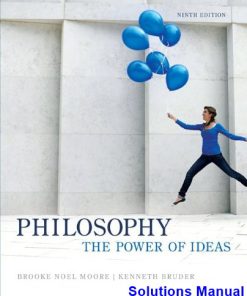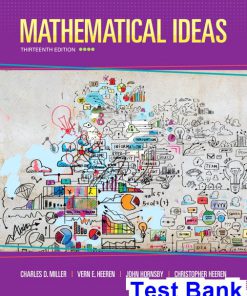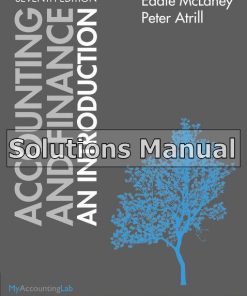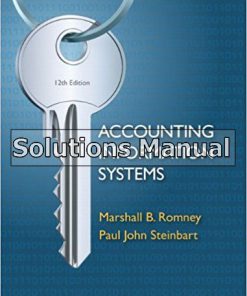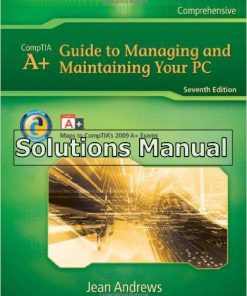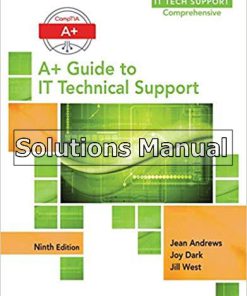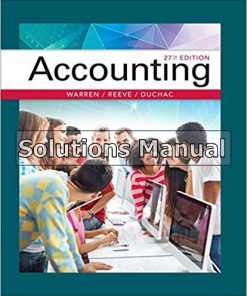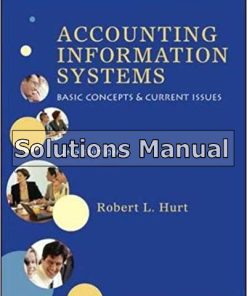Mathematical Ideas 13th Edition Miller Solutions Manual
You may also like
-
$26.50
$50.00 -
$26.50
$50.00
Instant download Mathematical Ideas 13th Edition Miller Solutions Manual pdf docx epub after payment.
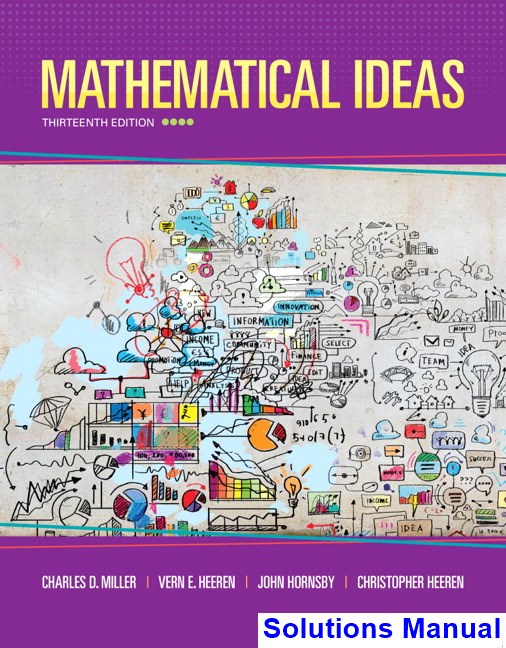
Product details:
- ISBN-10 : 0321977076
- ISBN-13 : 978-0321977076
- Author:
Mathematical Ideas 13/e, captures the interest of non-majors who take the Liberal Arts Math course by showing how mathematics plays an important role in everyday life. With a fresh, new focus on math in the workplace, this program shows students how math will play an important role in their future, while encouraging them to understand and embrace the mathematical concepts.
Table of contents:
1. The Art of Problem Solving
1.1 Solving Problems by Inductive Reasoning
1.2 An Application of Inductive Reasoning: Number Patterns 
1.3 Strategies for Problem Solving
1.4 Numeracy in Today’s World
Chapter 1 Summary
Chapter 1 Test
2. The Basic Concepts of Set Theory
2.1 Symbols and Terminology
2.2 Venn Diagrams and Subsets 
2.3 Set Operations 
2.4 Surveys and Cardinal Numbers 
Chapter 2 Summary
Chapter 2 Test 
3. Introduction to Logic
3.1 Statements and Quantifiers 
3.2 Truth Tables and Equivalent Statements 
3.3 The Conditional and Circuits 
3.4 The Conditional and Related Statements 
3.5 Analyzing Arguments with Euler Diagrams 
3.6 Analyzing Arguments with Truth Tables 
Chapter 3 Summary
Chapter 3 Test 
4. Numeration Systems
4.1 Historical Numeration Systems 
4.2 More Historical Numeration Systems 
4.3 Arithmetic in the Hindu-Arabic System
4.4 Conversion between Number Bases 
Chapter 4 Summary
Chapter 4 Test 
5. Number Theory
5.1 Prime and Composite Numbers 
5.2 Large Prime Numbers 
5.3 Selected Topics from Number Theory
5.4 Greatest Common Factor and Least Common Multiple
5.5 The Fibonacci Sequence and the Golden Ratio
5.6 Magic Squares (online)
Chapter 5 Summary
Chapter 5 Test 
6. The Real Numbers and Their Representations
6.1 Real Numbers, Order, and Absolute Value
6.2 Operations, Properties, and Applications of Real Numbers 
6.3 Rational Numbers and Decimal Representation
6.4 Irrational Numbers and Decimal Representation
6.5 Applications of Decimals and Percents 
Chapter 6 Summary
Chapter 6 Test 
7. The Basic Concepts of Algebra
7.1 Linear Equations 
7.2 Applications of Linear Equations 
7.3 Ratio, Proportion, and Variation
7.4 Linear Inequalities 
7.5 Properties of Exponents and Scientific Notation
7.6 Polynomials and Factoring
7.7 Quadratic Equations and Applications 
Chapter 7 Summary
Chapter 7 Test 
8. Graphs, Functions, and Systems of Equations and Inequalities
8.1 The Rectangular Coordinate System and Circles 
8.2 Lines, Slope, and Average Rate of Change
8.3 Equations of Lines 
8.4 Linear Functions, Graphs, and Models 
8.5 Quadratic Functions, Graphs, and Models 
8.6 Exponential and Logarithmic Functions, Graphs, and Models 
8.7 Systems of Linear Equations 
8.8 Applications of Linear Systems 
8.9 Linear Inequalities, Systems, and Linear Programming
Chapter 8 Summary
Chapter 8 Test 
9. Geometry
9.1 Points, Lines, Planes, and Angles 
9.2 Curves, Polygons, Circles, and Geometric Constructions 
9.3 The Geometry of Triangles: Congruence, Similarity, and the Pythagorean Theorem
9.4 Perimeter, Area, and Circumference
9.5 Volume and Surface Area
9.6 Transformational Geometry
9.7 Non-Euclidean Geometry and Topology
9.8 Chaos and Fractal Geometry
Chapter 9 Summary
Chapter 9 Test 
10. Counting Methods
10.1 Counting by Systematic Listing
10.2 Using the Fundamental Counting Principle
10.3 Using Permutations and Combinations 
10.4 Using Pascal’s Triangle
10.5 Counting Problems Involving “Not� and “Or�
Chapter 10 Summary
Chapter 10 Test 
11. Probability
11.1 Basic Concepts 
11.2 Events Involving “Not� and “Or�
11.3 Conditional Probability and Events Involving “And�
11.4 Binomial Probability
11.5 Expected Value and Simulation
Chapter 11 Summary
Chapter 11 Test 
12. Statistics
12.1 Visual Displays of Data
12.2 Measures of Central Tendency
12.3 Measures of Dispersion
12.4 Measures of Position
12.5 The Normal Distribution
Chapter 12 Summary
Chapter 12 Test 
13. Personal Financial Management
13.1 The Time Value of Money
13.2 Consumer Credit 
13.3 Truth in Lending
13.4 The Costs and Advantages of Home Ownership 
13.5 Financial Investments 
Chapter 13 Summary
Chapter 13 Test 
14. Graph Theory
14.1 Basic Concepts 
14.2 Euler Circuits and Route Planning
14.3 Hamilton Circuits and Algorithms 
14.4 Trees and Minimum Spanning Trees 
Chapter 14 Summary
Chapter 14 Test 
15. Voting and Apportionment
15.1 The Possibilities of Voting
15.2 The Impossibilities of Voting
15.3 The Possibilities of Apportionment 
15.4 The Impossibilities of Apportionment 
Chapter 15 Summary 
Chapter 15 Test 
People Also Search:
50 mathematical ideas
mathematical concepts and principles
mathematical concepts and techniques
mathematical concepts and quantitative reasoning
apply mathematical ideas and techniques
a convention for recording mathematical ideas
quantitative reasoning and mathematical ideas
how are mathematical ideas disseminated


